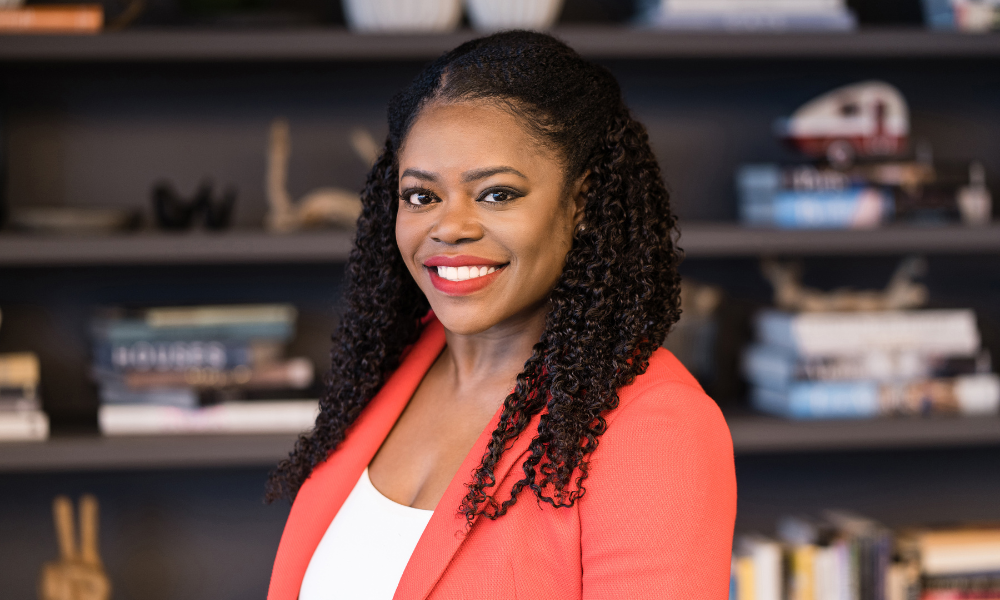Women pay higher interest rates for their mortgages in 49 out of 50 states

While it may be difficult to comprehend today, single women in the US weren’t able to obtain a mortgage without a male co-signer until 1974. While significant progress has been made in the intervening 49 years, a gender-based equality gap still exists in mortgage lending even with female borrowers defaulting less than their male counterparts.
Nneka Ukpai (pictured) spoke to Mortgage Professional America about ongoing inequities in lending. As head of financial innovation at Better, she helps design and implement new fintech products. Her role also includes a focus on addressing housing disparities for underrepresented groups by “doubling down” on technology and automation designed to eliminate biases from the mortgage lending process, she added.
“Even though it is recent history, and even though we have certainly made some strides, we still have a long way to go in achieving parity in homeownership,” Ukpai told MPA during a telephone interview, referring to the male co-signer provision for homebuying that is now a relic of the past. “We’re seeing trends where single women are making up more of the homebuying population than single men. In 2020, for example, 22% of homebuyers were single women with 9% of single men being home buyers. What’s fascinating is that we still see the same pervasive and persistent wage gap that we’ve seen year after year.”
What percentage of single women are homeowners?
Indeed, according to the National Association of Realtors, single women have comprised the second-largest group of homebuyers since 1981. As of 2023, single women made up 17% of all homebuyers as compared to their male counterparts who represent 9% of total homebuyers, according to the association. If you’re wondering, couples – both married and unmarried – remain the dominant group, buyers in about 70% of real estate purchases.
Ukpai ticked more sobering statistics showcasing disadvantages for female borrowers:
- The gender wage gap continues to persist. According to Pew Research, women on average still earn roughly 84% of their male counterparts.
- As a 2021 study found, women pay higher interest rates for their mortgages in 49 out of 50 states despite defaulting less than me.
- A recent Yale study found that single women pay around 2% more when purchasing a house, and earn 2% less when selling.
Ukpai zeroed in on the wage gap: “Women are still earning about 80 cents on the dollar to men so women have less assets, less income,” Ukpai said. “ And then as single women are buying homes, we’re also seeing women are paying more for their interest rates in 49 out of 50 states than men, despite defaulting less.”
Discrimination in lending?
Speaking to MPA on the heels of Women’s History Month, Ukpai said technology can be used to eliminate bias in lending that would help level the playing field: “There is a fundamental recognition that women are certainly capable and poised to be in positions where they can take advantage of the opportunities to build wealth, but we have to make sure we’re leveraging technology in a way that enables it to be more equitable.”
She detailed the use of technology at Better to eliminate lending bias: “We’ve probably invested hundreds of millions of dollars into our automated decision-making engine,” she said. “It takes out biases that occur along the journey of making a homeownership decision. There are thousands of decision points from application to homeowner and we’ve invested in a platform that’s color blind, gender blind, that’s powered by data-driven decisions.”
Yet there’s also a human touch, she noted: “We have a human review element at the end,” Ukpai said. “Obviously, we want to make sure we’re keeping the human element. We’re empowering people to have a fully digital experience if they want to. They don’t have to speak to anyone if they don’t want to. They can go from zero to homeowner fully on their phone.” The all-digital approach eliminates the sometimes-jarring experience of applying for credit at a bank as she did in 2011 as a freshly minted Harvard Law School grad before being rejected for lack of credit history, she recalled.
“We’re seeing a lot of people leaning more into this digital wave of lending,” she added. “We were really early adopters, early drivers, of a lot of the technology you’re seeing people just start to adopt.” The digital approach has paid dividends for female borrowers, she noted: As of March 2023, Better had funded almost 20,000 single women borrowers and approximately $5.5 billion in mortgages to single women without a co-borrower.
Single women US homeowner statistics
- Single women own and occupy 10.76 million homes in the US.
- 12.9% of American owner-occupied homes belong to single women.
- It wasn’t until 1900 that all states allowed women to hold property in their own names.
- The median age of a single female first-time homebuyer is 38, compared to 37 for a single male.
- Women spend about 2% more when they buy a house than men and sell for 2% less. As a result, they realize 1.5% annualized lower returns, or $1,600 a year, on their homes. Sounds small, but it adds up to $20,000 over 13 years (the US average length of homeownership).
- 17% of today’s single homebuyers are women; 9% are single men, compared to 11% and 10%, respectively, in 1981.



